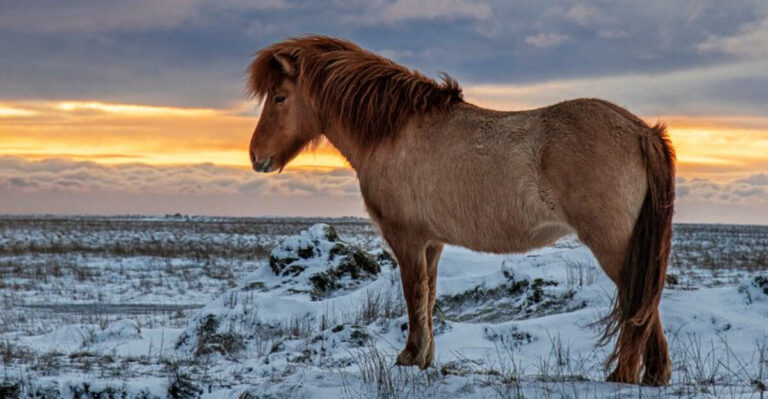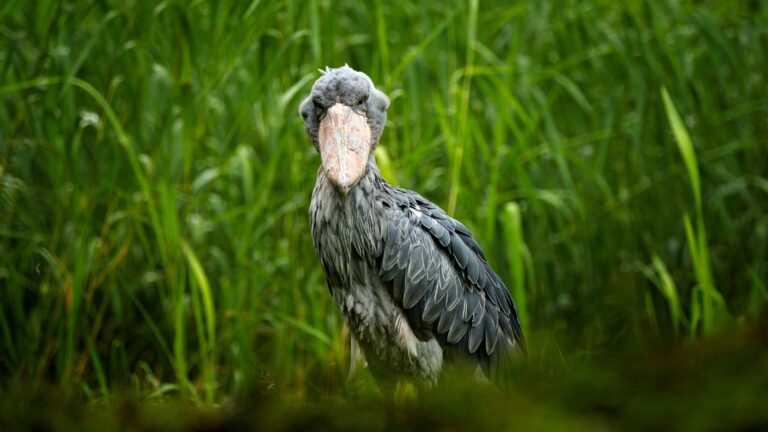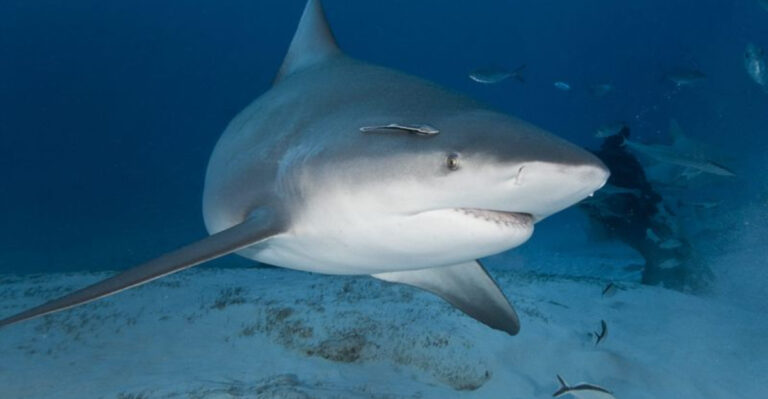14 Facts About North America’s Most Unique Reptile

Gila monsters are one of North America’s most intriguing reptiles, captivating the interest of both scientists and nature enthusiasts. Known for their striking appearance and unique behaviors, these creatures have carved out a significant place in the ecosystem of the American Southwest.
Let’s see some fascinating facts about gila monsters, shedding light on their lifestyle, habitat, and role in the natural world.
1. Venomous Bite
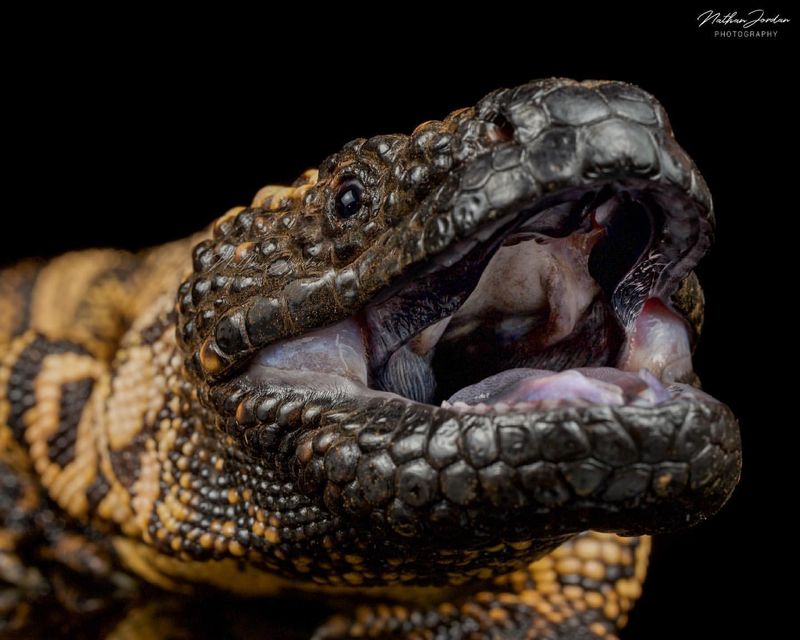
Gila monsters are one of the few venomous lizards in the world. Their venom is not delivered through fangs like snakes but through grooves in their lower teeth. This venom is used mainly for self-defense rather than hunting.
Gila monsters have a very powerful bite, and they tend to hold on to their prey, delivering venom through a chewing motion. This method ensures that the venom is effectively introduced into the victim’s wound. The venom contains several toxins, which research suggests have potential medical uses, including treatments for diabetes.
Despite their venomous nature, gila monsters are not aggressive towards humans and will only bite if provoked. Their slow metabolic rate means they don’t require frequent meals, making their encounters with other animals and humans relatively rare.
These lizards are a testament to nature’s innovation, using venom as a defensive tool rather than for predation. Observing a gila monster in the wild is rare, and their bright colors serve as a warning to potential predators. The gila monster’s unique adaptation of venom has made it an interesting subject of scientific study, contributing to our understanding of venomous animals.
2. Distinctive Appearance
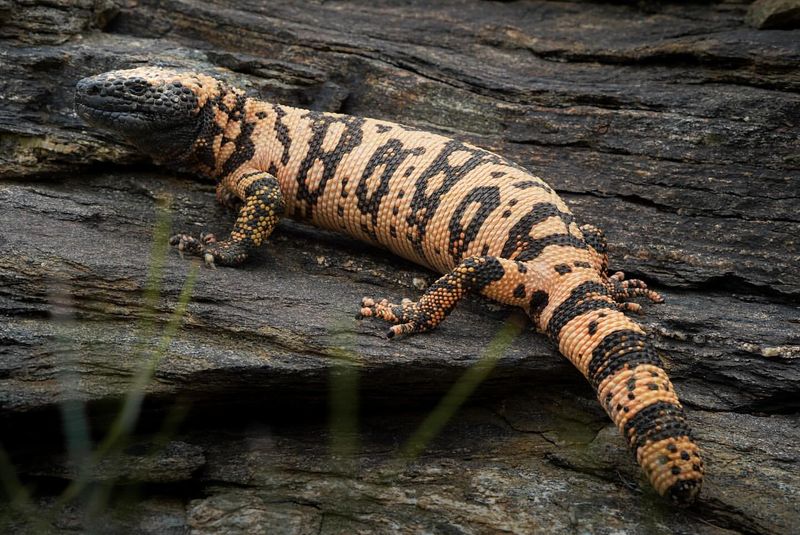
Gila monsters are easily recognizable due to their distinctive black and orange or pink patterning. This coloration serves as a warning to predators about their venomous nature. The bright and contrasting colors make them one of the most visually striking reptiles in North America.
Their skin is beaded with small osteoderms, making it appear bumpy and rough. This texture not only provides protection but also aids in camouflage among the rocky terrains of their desert habitat.
The unique appearance of gila monsters has made them a symbol of the desert, often appearing in local folklore and myths. The lizard’s thick tail is used not just for fat storage, which is crucial for survival during food shortages, but also for balance.
Adult gila monsters can reach up to 2 feet in length, making them relatively large compared to other lizards in the region. Their stout body and slow, deliberate movements make them appear almost prehistoric.
Observing a gila monster in its natural environment gives insight into the adaptability and resilience required to thrive in harsh desert conditions. Their appearance is a key factor in their survival, deterring predators and aiding in thermoregulation.
3. Desert Habitat
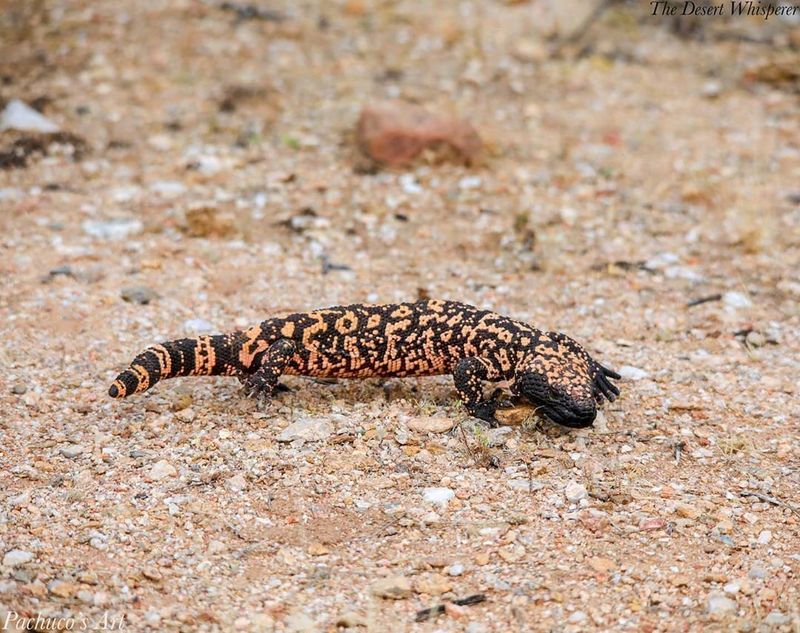
Gila monsters are native to the arid deserts of the Southwestern United States and Northwestern Mexico. They thrive in hot, dry environments where temperatures can soar during the day and drop significantly at night. This habitat consists of rocky outcrops, desert shrubs, and sparse vegetation, providing them with plenty of hiding spots from predators and extreme weather.
Gila monsters are primarily ground-dwellers, though they can climb low vegetation and rocks. These lizards are most active during the cooler parts of the day, such as early morning and late afternoon.
They spend up to 95% of their time in burrows, which helps them avoid the extreme heat and conserve moisture. Their burrowing behavior also plays an important role in the desert ecosystem, as their abandoned burrows provide shelter for other wildlife.
The desert habitat of the gila monster is not just a home but a complex ecosystem that supports a diverse range of life. Understanding their habitat is crucial for conservation efforts, as these environments are often threatened by human activities such as development and agriculture. Protecting the desert habitat ensures the survival of the gila monster and the myriad of species that depend on it.
4. Diet And Hunting
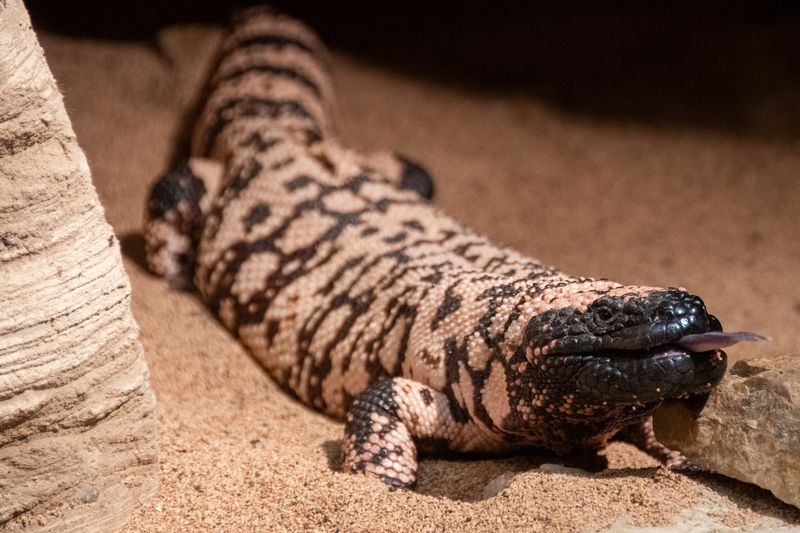
Gila monsters have a diverse diet, primarily consisting of eggs, small mammals, birds, and reptiles. They are opportunistic feeders, taking advantage of whatever food sources are available in their harsh desert environment.
With their keen sense of smell, gila monsters can locate prey buried underground, including bird eggs, which are a favorite. They are slow-moving creatures, relying on stealth and patience rather than speed to catch their prey. Gila monsters possess a strong bite, and their venom, although primarily for defense, helps subdue prey.
Their diet is heavily influenced by seasonal availability, with a preference for high-protein meals that provide the necessary energy reserves. These lizards can consume large meals relative to their size, sometimes up to a third of their body weight in one sitting.
This ability is crucial for survival in environments where food may be scarce. After feeding, gila monsters may not eat again for several weeks, utilizing the stored fat in their tails for sustenance.
This efficient energy management allows them to endure periods of food scarcity. Their hunting and feeding behaviors are vital for maintaining the balance in their ecosystem, controlling populations of prey species.
5. Conservation Status
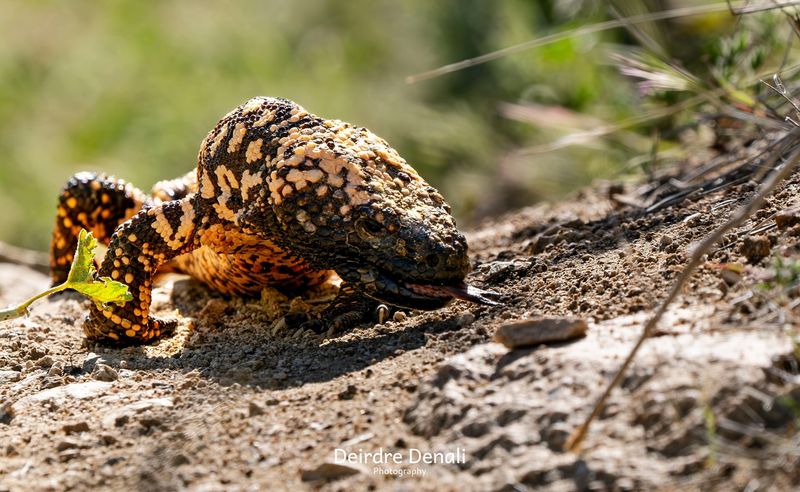
The gila monster is classified as Near Threatened on the IUCN Red List, primarily due to habitat loss and illegal pet trade. Human activities such as urban development, agriculture, and road construction threaten their natural habitats.
Conservation efforts are crucial to protect these unique reptiles and their ecosystems. Organizations and researchers are working to monitor populations, understand their ecology, and implement protective measures.
Educational programs aimed at local communities highlight the importance of gila monsters in the ecosystem, fostering coexistence and reducing unnecessary fear or persecution. Legal protection under various wildlife acts in the United States and Mexico helps curb illegal collection and trade.
The gila monster’s status serves as an indicator of the health of the desert ecosystem, with their decline signaling broader environmental issues. Conservationists focus on habitat preservation, restoration, and connectivity to ensure the survival of these lizards.
Encouraging responsible land use and minimizing human-wildlife conflicts are key strategies. The gila monster’s unique biology and role in the desert ecosystem make it a species of significant interest, with ongoing research contributing valuable insights into conservation biology and ecosystem management.
6. Reproduction And Lifespan
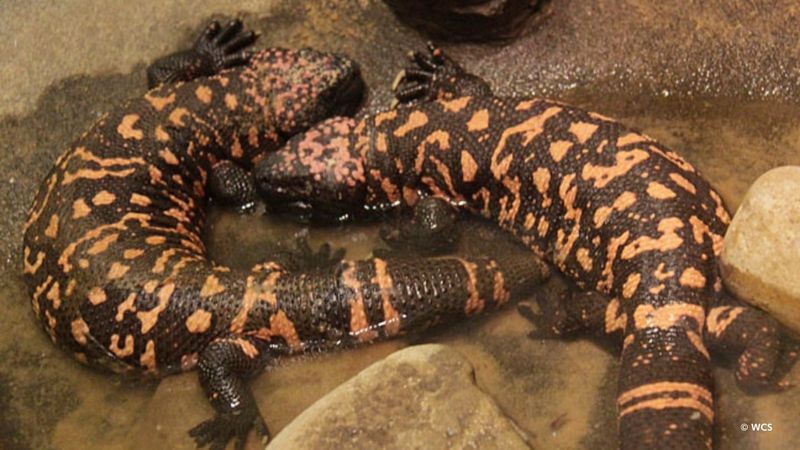
Gila monsters have a unique reproduction cycle that is closely tied to the seasons. Mating occurs in the spring, following a period of hibernation during the cold winter months. Males engage in combat to win the opportunity to mate with a female, often wrestling until one submits.
Once mating is successful, females lay a clutch of eggs, usually in June or July, in a burrow or under a rock for protection. The eggs incubate for about four months before hatching. Young gila monsters are independent from birth, receiving no parental care.
They are born fully equipped with venom and a keen instinct for survival. Gila monsters grow slowly, reaching maturity at about 3 to 5 years of age. They have a relatively long lifespan for lizards, living up to 20 years in the wild and even longer in captivity.
Their reproductive strategy emphasizes quality over quantity, with a focus on ensuring the survival of a few well-adapted offspring.
This approach, combined with their long lifespan, helps stabilize their population in the challenging desert environment. Understanding their reproductive habits is vital for conservation efforts, particularly in managing populations and protecting critical habitats.
7. Adaptations For Survival
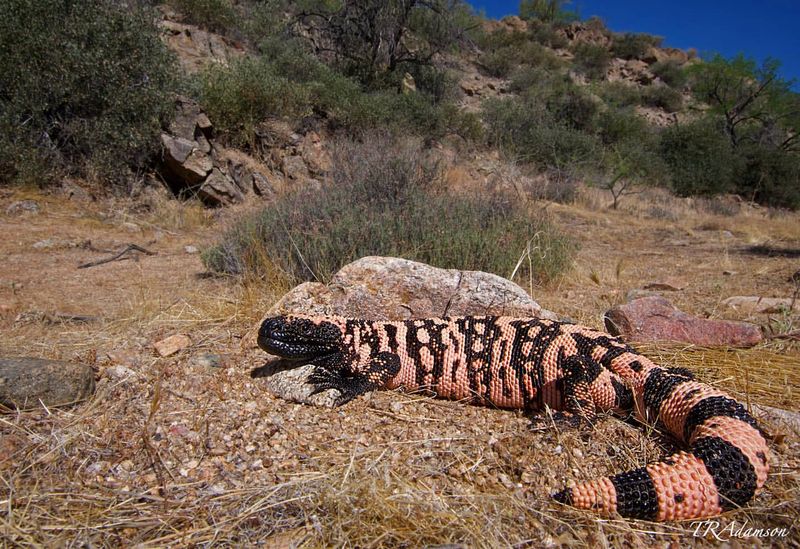
Gila monsters possess a range of adaptations that enable them to survive in harsh desert environments. Their thick, beaded skin provides protection from predators and helps minimize water loss, a critical feature in arid climates.
The scales are composed of bony beads called osteoderms, providing both armor and camouflage. Their ability to store fat in their tails is another crucial adaptation, allowing them to survive long periods without food. This stored energy can be used during hibernation or when prey is scarce.
Gila monsters’ kidneys are adapted to conserve water, enabling them to thrive in habitats where water is limited. Their slow metabolism reduces the need for frequent feeding, making them efficient survivors in the desert. The venomous bite, while primarily a defensive tool, offers an advantage in subduing prey.
Gila monsters also exhibit behavioral adaptations, such as spending the hottest parts of the day in burrows to avoid extreme temperatures.
These lizards are a prime example of evolutionary ingenuity, having developed features that allow them to flourish in a challenging environment. Understanding these adaptations provides insight into their ecological role and helps inform conservation strategies.
8. Behavioral Characteristics
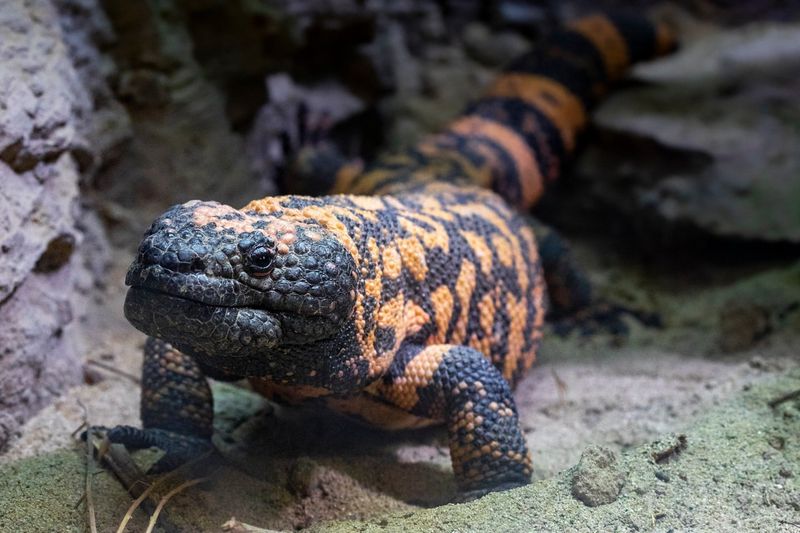
Gila monsters are solitary creatures, spending most of their lives alone except during the breeding season. They are known for their slow, deliberate movements, which may appear lethargic but are energy efficient. This pace is adequate for their environment, where quick movements are rarely necessary.
Gila monsters use their forked tongues to detect scent particles in the air, helping them locate prey and navigate their surroundings. This keen sense of smell is crucial for finding food and avoiding predators.
Although they are ground-dwellers, gila monsters can climb low shrubs and rocks, displaying surprising agility. They have a hierarchical social structure, often seen in males during breeding season when they engage in combat to establish dominance.
These wrestling matches are not just about mating rights but also reinforce social order. Gila monsters are generally non-aggressive and prefer to avoid confrontation. Their bright colors and warning posture serve to deter potential threats.
By understanding their behavior, we gain insight into their ecological niche and the adaptations that make them unique. These characteristics highlight the complex interplay between biology and environment, making gila monsters a fascinating subject of study.
9. Hibernation Patterns
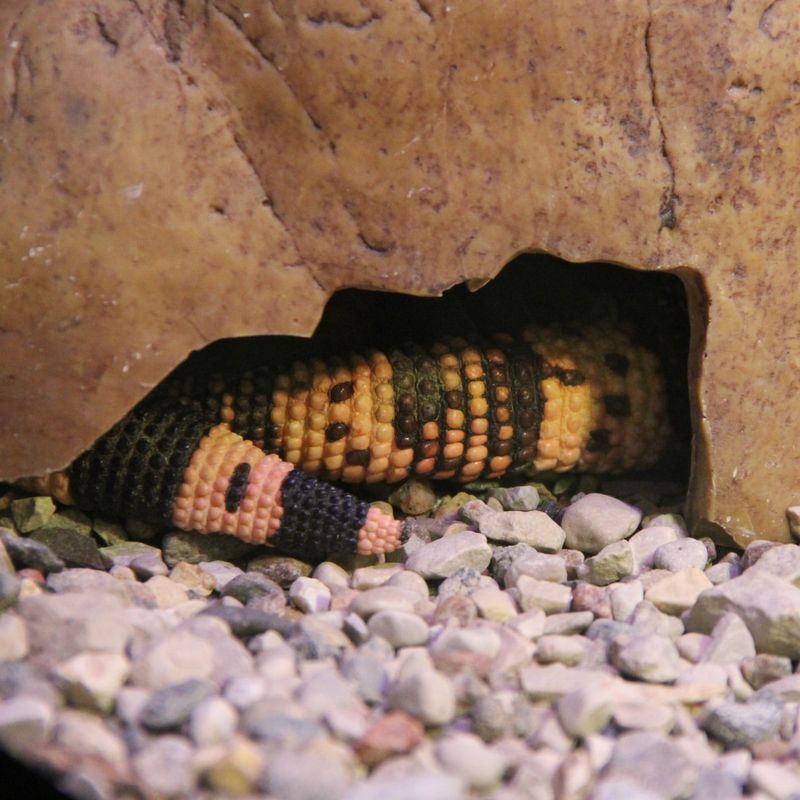
Gila monsters undergo a period of hibernation during the colder months of the year, typically from November to February. This hibernation is a crucial survival strategy, allowing them to conserve energy when food is scarce and temperatures drop.
Before hibernating, gila monsters will increase their food intake to build up fat reserves, particularly in their tails, which provide essential energy during dormancy. They retreat to burrows dug by themselves or other animals, where the temperature and humidity remain relatively stable.
During hibernation, their metabolic rate drops significantly, reducing the need for food and water. This period of inactivity is vital for their survival, as it minimizes exposure to harsh winter conditions.
As temperatures rise in the spring, gila monsters emerge from hibernation, often appearing sluggish as they warm up and resume normal activities. Their hibernation patterns are closely tied to environmental cues, ensuring they emerge when conditions are favorable for feeding and breeding.
This adaptation highlights their resilience and ability to thrive in extreme environments. Understanding their hibernation habits is essential for conservation, particularly in the context of climate change and habitat disruption.
10. Gila Monster Myths
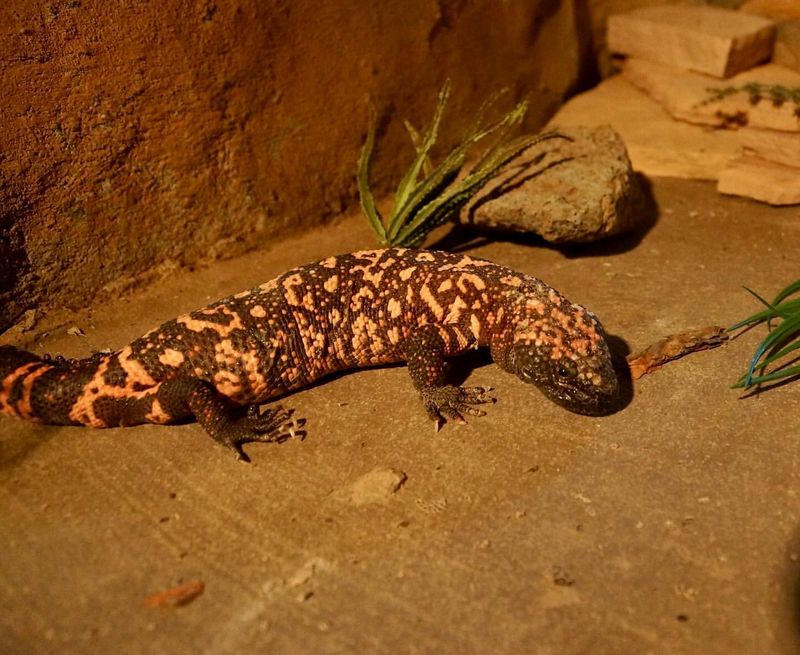
Gila monsters have been subjects of myths and legends, particularly among Native American cultures in the Southwestern United States. These stories often depict them as powerful and mystical creatures.
One common myth is that gila monsters have the ability to kill a human with a single breath or stare, which is far from true. Such tales likely arose from their venomous nature and striking appearance, which can evoke fear and awe.
Despite these myths, gila monsters are generally harmless to humans unless provoked. They have been associated with various spiritual beliefs, symbolizing strength, endurance, and resilience. In some cultures, they are considered guardians of the desert, protecting the land and its resources.
These creatures have also been featured in folklore as wise beings, possessing knowledge of medicinal plants and healing. Understanding these cultural narratives provides a richer insight into the human relationship with gila monsters, highlighting how these reptiles have influenced local traditions and beliefs.
By dispelling myths and promoting accurate information, we can foster a greater appreciation for gila monsters and their role in the ecosystem. These stories underline the importance of respecting and preserving wildlife and their habitats.
11. Medical Research
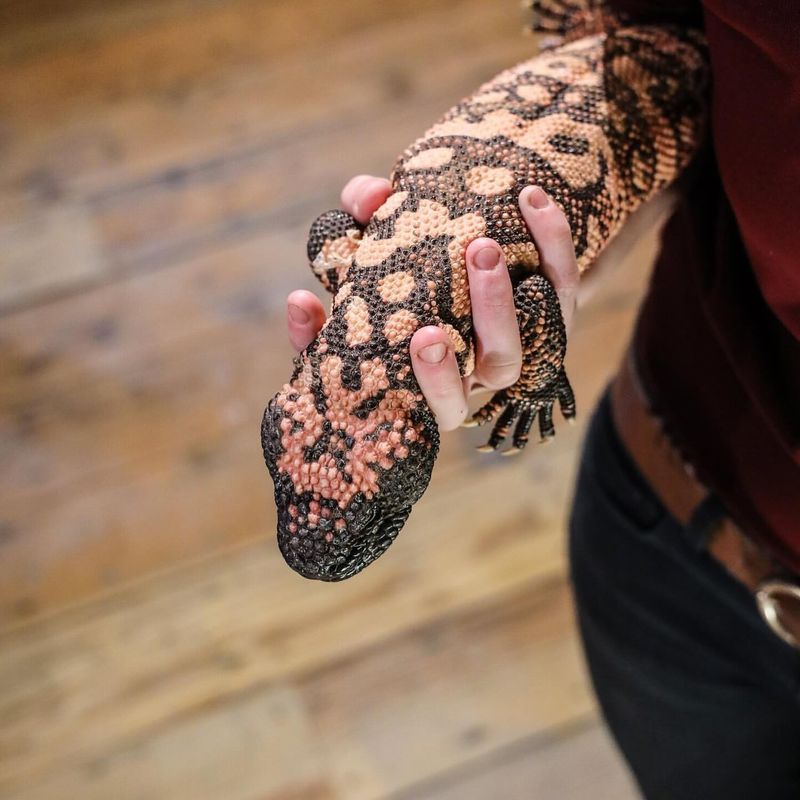
Gila monster venom has garnered significant attention from the medical community due to its potential therapeutic properties. The venom contains a compound called exendin-4, which has been used to develop a drug for treating type 2 diabetes.
This drug, known as exenatide, helps regulate blood sugar levels and has improved the quality of life for many patients. The discovery of exendin-4 highlights the importance of biodiversity and the potential medical benefits of studying wildlife.
Research continues to explore the venom’s properties, investigating other possible applications, such as treatments for obesity and neurological disorders. The study of gila monster venom has opened new avenues for drug development, showcasing the intricate connections between nature and human health.
By protecting these reptiles and their habitats, we ensure the continued availability of these valuable biological resources. The medical benefits derived from gila monster venom underscore the broader significance of conservation efforts.
Understanding the complexities of venom and its applications contributes to advances in pharmacology and biochemistry. This intersection of nature and science illustrates how preserving biodiversity can lead to groundbreaking discoveries that benefit humanity.
12. Interactions With Humans
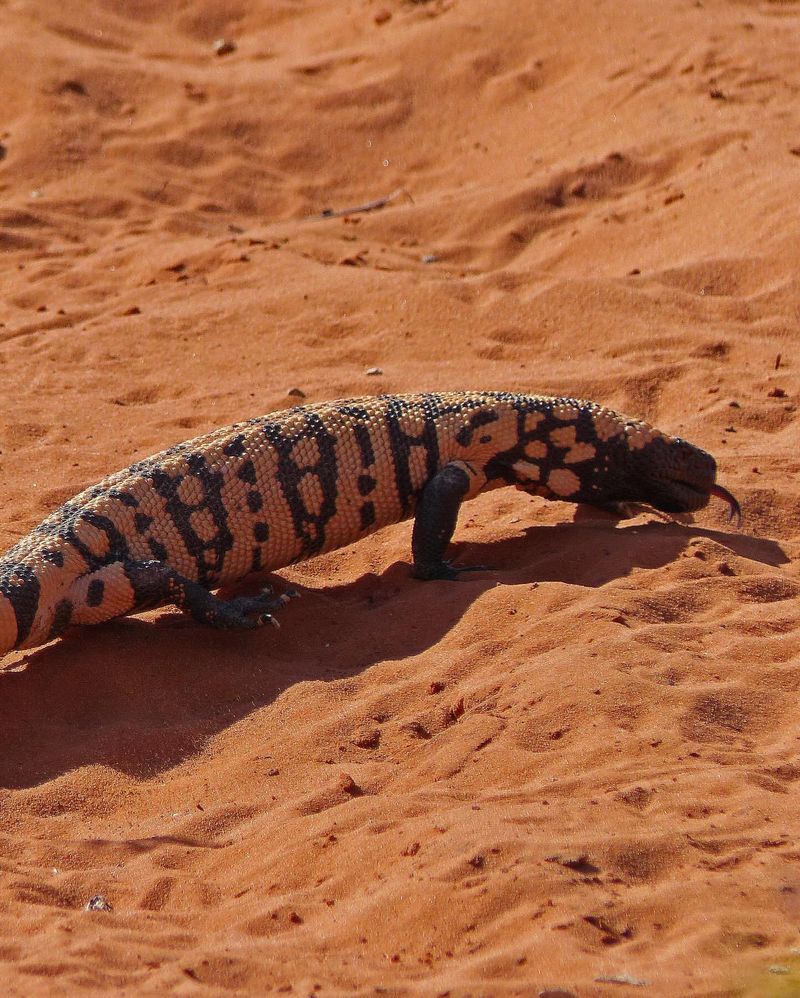
Gila monsters have a unique relationship with humans, characterized by a mix of fear, fascination, and respect. In regions where they are native, these lizards are often misunderstood, leading to unwarranted fear. However, educational programs and conservation efforts have helped to change perceptions.
Many people are now aware of the gila monster’s ecological role and its minimal threat to humans. Encounters between humans and gila monsters typically occur in desert parks or during hikes in their natural habitat.
It’s important for people to admire these creatures from a distance, respecting their space and avoiding handling them. Educational initiatives by wildlife agencies aim to teach people about the gila monster’s behavior, habitat, and the importance of their conservation.
These programs often involve guided tours, informational sessions, and opportunities to observe gila monsters in a controlled environment. Building awareness and appreciation for gila monsters helps protect them from harm and illegal pet trade.
Successful coexistence with these reptiles involves respecting their habitat and understanding their behavior. By fostering positive interactions, we can ensure the continued survival of gila monsters and the preservation of their desert ecosystems.
13. Legal Protections
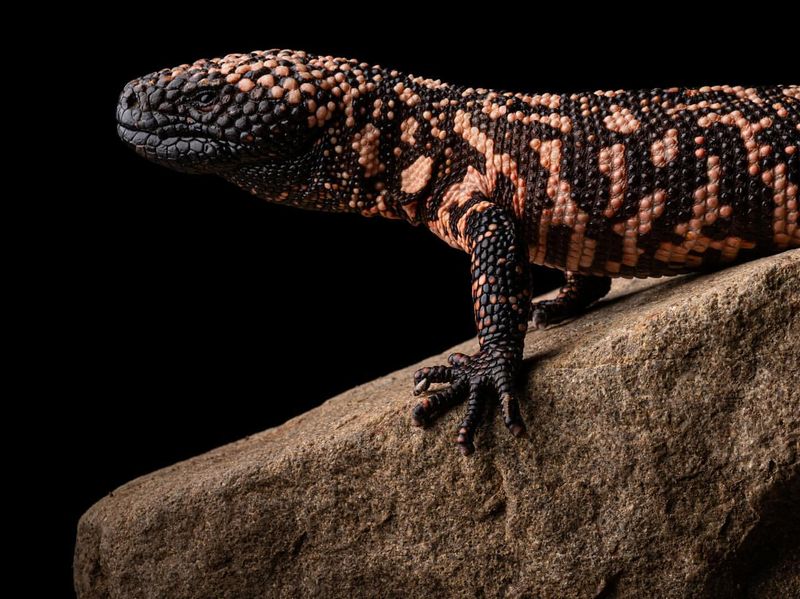
Gila monsters are protected by law in both the United States and Mexico, reflecting their ecological importance and the threats they face. In the U.S., they are listed under the Endangered Species Act in some states, making it illegal to harm, capture, or trade these lizards without proper authorization.
These legal protections are crucial for safeguarding their populations against habitat destruction and illegal collection. In Mexico, similar legal frameworks exist to protect gila monsters, emphasizing the need for cross-border cooperation in conservation efforts.
These laws help ensure that their natural habitats are preserved and that any interaction with humans is carefully managed. Legal protections also play a significant role in research, requiring permits for scientific studies, which ensures that these activities do not negatively impact wild populations.
By establishing and enforcing these regulations, authorities can better manage and conserve gila monster populations, contributing to the overall health of desert ecosystems. Compliance with legal protections is essential for anyone living or working in areas where gila monsters are found.
These measures reflect a commitment to preserving biodiversity and highlight the ongoing efforts to balance human activities with wildlife conservation.
14. Cultural Significance
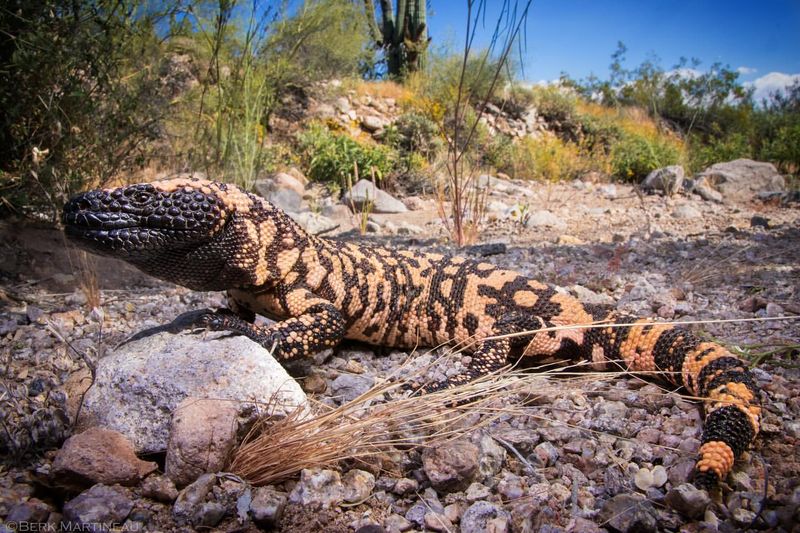
Gila monsters hold a special place in the cultural history of the Southwestern United States and Northern Mexico. They are often depicted in Native American art, folklore, and symbolism. These reptiles are seen as symbols of strength and tenacity, embodying the spirit of the desert.
In some Native American tribes, gila monsters are revered and considered sacred, believed to possess healing powers and deep wisdom. The intricate patterns on their skin inspire traditional crafts and art, influencing designs in pottery, textiles, and jewelry.
This cultural significance extends beyond art, as gila monsters feature in local stories and legends that have been passed down through generations. They are often portrayed as guardians of the land, with some tales attributing them with special abilities to protect nature and its resources.
Understanding their cultural role enriches our appreciation of gila monsters and underscores the importance of preserving their habitat. These reptiles symbolize the connection between nature, culture, and heritage, highlighting the need to protect both wildlife and cultural traditions.
By acknowledging their cultural significance, conservation efforts can engage communities in preserving both the gila monsters and their rich cultural narratives.




